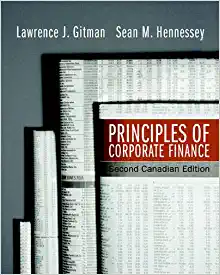Question
Hi I need help with this assignment. I've almost done but not sure whether im doing it right. would like to compare and contrast. Thank
Hi I need help with this assignment. I've almost done but not sure whether im doing it right. would like to compare and contrast. Thank you.
Question 1
- The price of a European call option on a stock with a strike price of $50 is $6. The stock price is $51, the continuously compounded risk-free rate (all maturities) is 6% and the time to maturity is one year. A dividend of $1 is expected in six months. What is the price of a one-year European put option on the stock with a strike price of $50?
- Assume six-month forward price of XYZ stock is $58. The stock pays no dividends. The six-month continuously compounded rate of interest is 4%. If the price of a put option is $3 what will be the maximum possible exercise price X that is consistent within no arbitrage context?
Question 2 The current price of a non-dividend-paying stock is $40. Over the next year it is expected to rise to $42 or fall to $37. An investor buys put options with a strike price of $41. Explain the number of shares necessary and the condition required to hedge the position?
Question 3 (a) Which of the following is correct? Explain your answer based on the correct choice.
- A calendar spread can be created by buying a call and selling a put when the strike prices are the same and the times to maturity are different
- A calendar spread can be created by buying a put and selling a call when the strike prices are the same and the times to maturity are different
- A calendar spread can be created by buying a call and selling a call when the strike prices are different and the times to maturity are different
- A calendar spread can be created by buying a call and selling a call when the strike prices are the same and the times to maturity are different
(b) A trader creates a long butterfly spread from options with strike prices $60, $65, and $70 by trading a total of 400 options. The options are worth $11, $14, and $18. What is the maximum net loss (after the cost of the options is taken into account)? Explain your answer in detail.
Step by Step Solution
There are 3 Steps involved in it
Step: 1

Get Instant Access to Expert-Tailored Solutions
See step-by-step solutions with expert insights and AI powered tools for academic success
Step: 2

Step: 3

Ace Your Homework with AI
Get the answers you need in no time with our AI-driven, step-by-step assistance
Get Started


